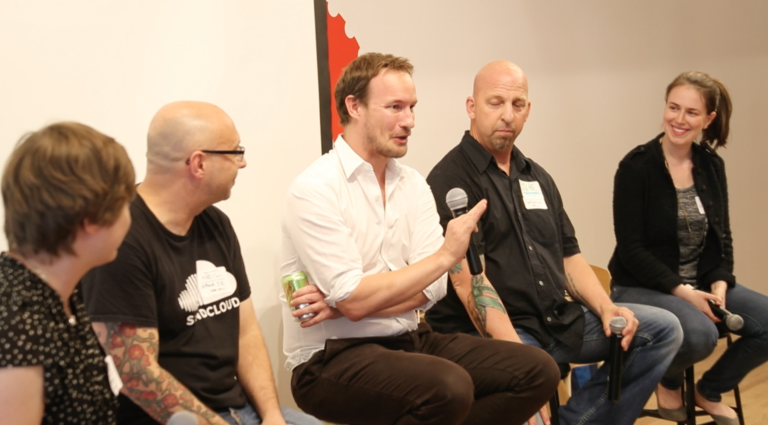Asking for feedback is a valuable way to make your mark and get ahead. You can demonstrate to your team that you’re vested in your work output while showing that you care about input and are dedicated to improvement.
The most important part of asking for feedback is simple: do it. It might be intimidating at first, especially if you’re not sure how it will turn out. But it’s worth the effort (and the potentially bruised ego). We’ve narrowed down specific points to help you get the feedback you need, from the right people – and then make it work for you.
Why are you asking for feedback?
At the core of your ask, be intentional about why you want feedback. Being transparent about your goals makes it easier for others to relate to you and share relevant information. Whether you want to get a project across the finish line, improve a process, or get general feedback on your performance – always have a clear vision of your intent.
We’ve previously outlined why you need to ask for feedback more often, but you’re bound to have your own specific intentions. Knowing why you are asking will help you frame your questions, find the right people, and get helpful responses.
Who do you need to ask?
Consider the best person (or people) for the job. Are you looking for a lot of feedback from different people, or are you looking for a single expert? The best person to ask may not be your boss. It could be a colleague or a direct report who has hands-on experience with the topic you want to learn about.
If you want to know about the efficiency of your onboarding process, a recent hire might have more to say than the long-serving VP. Asking the right people means building relationships and giving credit to those with the most relevant experience.
What’s the best way to connect?
Your company may have internal policies – official or implicit – for getting feedback. Ask around and there may be a simple process in place. If you’re on your own, think about how you would like to be approached for this type of feedback.
Should you email blast your whole team or is a Zoom meeting with a colleague more appropriate? Can you write a quick Slack message, or do you need to get on the phone for a longer conversation? The format you choose will depend on the amount of detail you need and how long it takes to answer your questions. Be respectful of others’ time and consider the most suitable format to reach out.
What feedback do you really need?
There are no limitations here, but you want to make sure that the kind of information you get back is what you actually need, so consider this in advance. Do you need to ask multiple open-ended questions, or will a quick response be enough? Explain exactly why you want this person’s feedback and what you’re looking to achieve.
If you go the route of more involved feedback, here are some examples of open-ended questions to get you thinking:
- What were your initial impressions of my presentation?
- Can you think of any improvements I could implement next time?
- Can you describe anything you’d like me to do differently?
- How did you feel I completed this new task?
- Do you have any specific ideas on what skills I could improve?
What do you do with the feedback?
Depending on the feedback you get, you may feel uplifted, deflated, or maybe a bit lost. You might feel a bit of all three. Let’s talk about how to respond to different kinds of feedback.
Positive feedback: Research shows that humans have a negativity bias tied to our strong desire for social acceptance. We’re much more likely to hold onto negative feedback. This means we have to work extra hard to remember the positive stuff that comes our way. You could create a document to cut and paste your positive feedback or simply take an extra 20 seconds to let the positive feedback sink in. It’s important to take time to appreciate and hold onto the positive notes.
Negative feedback: Remind yourself that negative feedback is not a reflection on you as a person, but a commentary on your work. What can you learn from the feedback? How can you use it to make improvements and advance your career? When you get negative feedback, take it seriously, but with a grain of salt. People can have a wide range of perspectives on the right way to go, so you can also consider a second opinion. Be willing to challenge yourself, but at the same time, you don’t need to react to every piece of feedback you get.
Unclear feedback: You might have gotten feedback that doesn’t do the job. If the respondent wasn’t clear about how you can improve, you can always follow up and ask for specifics. This helps ensure that the time the person has already spent sharing their two cents can actually have an impact on you.
Taking action and following up
Whether or not you decide to incorporate feedback into your work, be sure to follow up. Thank your co-worker for taking the time to respond to your feedback request. You can also provide specific information on how you plan to apply the feedback to your work (“Hey, check out this new version!”). Bonus points if you show how you implemented their ideas (“I tried to incorporate your tips. Was this pitch more engaging?”).
Ultimately, asking for feedback is about getting information you can put into action. You’ll become better at your job, build relationships and trust with your peers, and get a clearer sense of how to advance your career. Don’t be afraid to take that first step: you never know what you might learn or what doors you’ll open by taking this small risk.



